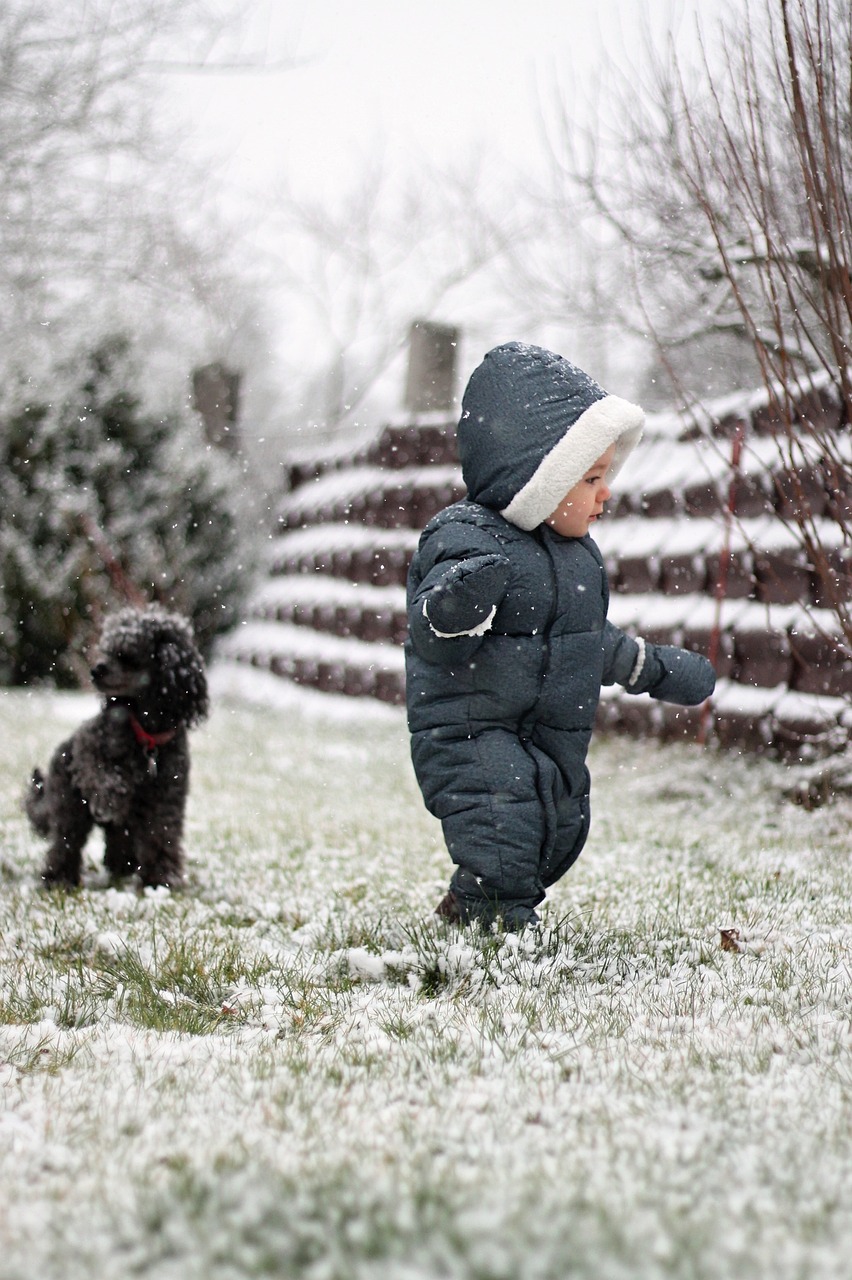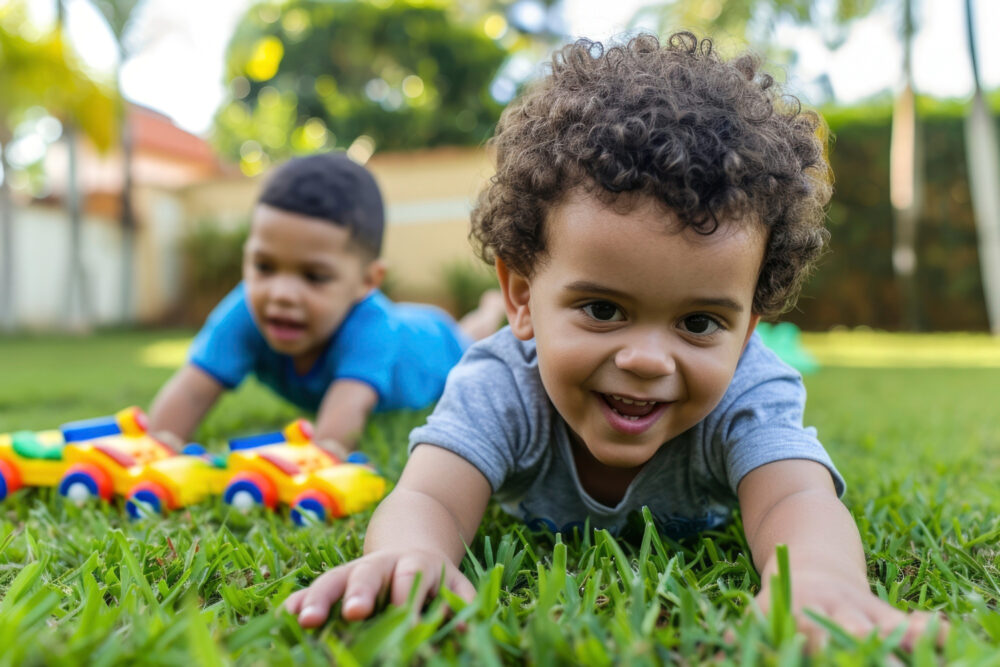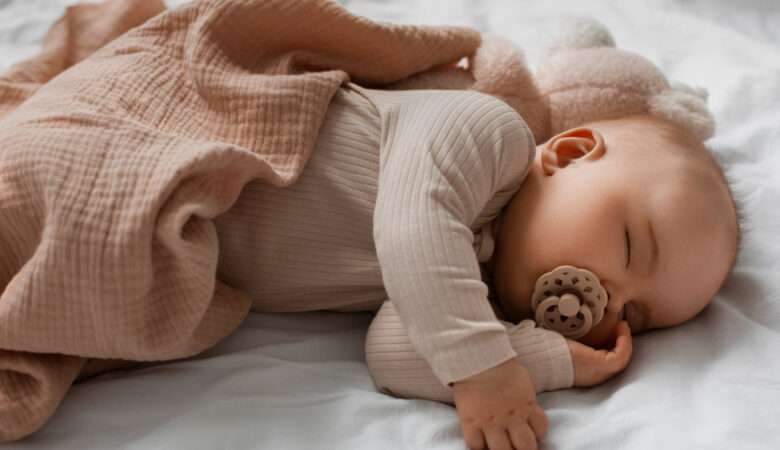One of the things I quickly realized as a new parent was how much babies love exploring the world through their senses. Everything is a discovery—textures, sounds, colors, and even the feeling of a cool breeze on their skin. Sensory play became a favorite in our home, not just because it entertained my baby, but because I could see how it helped her develop and engage with the world around her.
The best part? Sensory play changes as your baby grows. A simple activity that starts as tummy-time fun at three months can turn into an interactive game at nine months. And by using seasonal elements, you can keep things fresh and exciting all year long.
Here are some easy, low-prep sensory play ideas that will grow with your little one, season by season.
Spring: Soft, Fresh, and Full of New Discoveries
Spring is all about new textures, bright colors, and gentle breezes—perfect for little explorers.
Spring Sensory Bin (3+ Months)
- Fill a shallow container with soft grass clippings, fresh flower petals (safe varieties like dandelions or daisies), and cool waterin a small cup for splashing.
- Let your baby touch and explore while supervised. Babies love running their fingers over different textures!
How it grows: As your baby gets older, add safe scoops, small containers, or plastic eggs to encourage fine motor skills and hand-eye coordination.
Wind Chime Listening Time (2+ Months)
- Sit outside and let your baby listen to the sounds of nature—birds chirping, leaves rustling, or wind chimes tinkling.
- If indoors, play soft nature sounds while gently moving their hands and feetto the rhythm.
How it grows: By six months, your baby might start reaching for the chimes or clapping along. You can also make a simple ribbon wind chime for them to pull and explore.
Summer: Splashy, Messy, and Full of Energy
Summer is the season of water play, outdoor textures, and bright colors. It’s the perfect time for cool sensory experiences to beat the heat.

Image by lisa runnels from Pixabay
Frozen Fruit Teethers (5+ Months)
- Freeze thin slices of watermelon, banana, or cucumberand let your baby gum them during teething. The cold temperature + sweet taste = instant relief!
- If they aren’t eating solids yet, freeze breastmilk or formula in a silicone feederfor a safe, soothing experience.
How it grows: By nine months, they can start holding frozen fruit pops on their own, helping with hand-eye coordination and self-feeding.
Beach (or Backyard) Sensory Exploration (4+ Months)
- Fill a small tray with damp sandand let your baby run their fingers through it.
- Add seashells, smooth stones, or a cup of waterfor extra exploration.
- If you don’t have sand, oatmeal or flourworks as a mess-free indoor alternative!
How it grows: As they get older, let them dig, scoop, and pour water into the sand to see how textures change.
Autumn: Crunchy, Cozy, and Full of Earthy Tones
Autumn brings crunchy leaves, cozy fabrics, and warm colors—a sensory goldmine for babies.
Crunchy Leaf Play (3+ Months)
- Lay a soft blanket outdoors and let your baby touch, crinkle, and listento real leaves.
- Show them different colors and textures—smooth acorns, bumpy pinecones (under supervision), or fuzzy moss.
How it grows: By six to eight months, your baby might enjoy a “leaf rain” where you gently drop leaves over them, turning it into a fun, interactive game.
Pumpkin Spice Smelling Jars (6+ Months)
- Fill small containers with cinnamon sticks, pumpkin spice, or vanilla beansand let your baby smell them.
- Smell is a powerful sensory tool, and introducing different scentscan be just as engaging as touch and sight.
How it grows: Older babies can help shake a sealed jar with cinnamon inside, turning it into a mini music shaker.
Winter: Soft, Warm, and Full of Twinkling Lights
Winter is all about contrasts—warm vs. cold, soft vs. rough, bright vs. dark. It’s a great time for cozy indoor play and gentle holiday magic.
Snowy Texture Play (5+ Months)
- If you have real snow, bring a small tray indoors and let your baby touch it (briefly!) before it melts.
- No snow? Use whipped cream or coconut flakes for a similar cool, fluffy effect.
How it grows: Older babies can scoop and squish with spoons or their hands, turning it into messy play.

Image by Petra Šolajová from Pixabay
Twinkle Light Sensory Time (2+ Months)
- Lie on a blanket in a dim room and place string lights inside a clear storage bin to create a gentle glow.
- Slowly move the bin side to side to create a dreamy, moving light effect for your baby to watch.
How it grows: By eight or nine months, babies will love chasing and reaching for the lights, improving their visual tracking skills.
Why Sensory Play Matters
Sensory activities aren’t just fun—they help babies develop essential skills like:
Fine and gross motor development
Hand-eye coordination
Language skills (as you describe textures, sounds, and smells)
Cognitive growth through exploring different elements
Plus, sensory play is completely adaptable. Whether your baby is three months or a year old, the same activity can grow with them—offering new experiences every time.
So, the next time you’re looking for something engaging to do with your baby, take inspiration from the season around you. There’s a whole world of textures, sounds, and scents waiting to be explored—one tiny hand at a time.









Leave a Reply